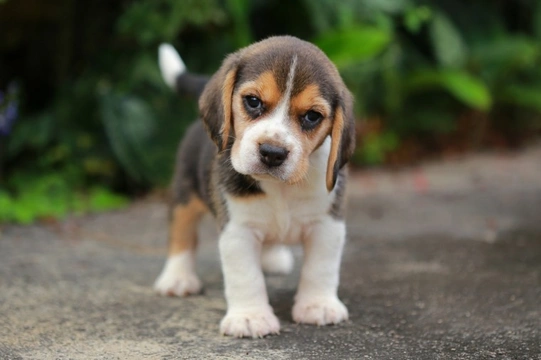
Five tips for toilet training a puppy
Toilet training or house training is one of the most important skills that puppies need to be taught, and also one that can be the most challenging and frustrating to achieve without problems.
If you’re lucky, toilet training may have already begun when you get your new pup from their breeder, particularly if you choose conscientious breeders that wait until their pups are around 14 weeks old to go onto their new forever homes.
There are virtually as many different potential approaches to toilet training or house training a puppy as there are puppies out there too, and which one you use and which one works for your own pup is a matter of personal opinion – and there is no one size fits all best or most obvious solution that works for every dog.
However, there are a number of universal factors that can help to make toilet training a puppy successfully that much easier, or certainly, that will help to prevent problems that can easily be avoided – regardless of the method you’re using to train your pup.
With this in mind, this article will share five tips for toilet training a puppy that all dog owners should know and follow. Read on to learn more.
Learn about breed-specific challenges
How quickly or slowly any given puppy gets to grips with toilet training can be hugely variable, depending on their own skills and personality and yours in terms of how effective you are as a trainer – and how well your style of training suits the pup.
However, different breeds and types of dogs can take quite variable lengths of time to get to grips with house training – and some breeds have built up a reputation as being much more difficult, and taking much longer, than most others.
The beagle and the Afghan hound are a couple of breeds that have built up a strong if anecdotal reputation as being among the hardest of breeds to house train reliably, and understanding why such breeds can be challenging can help to ease the process. The beagle is a breed that tends to be inquisitive and playful with a fairly short attention span, so they don’t necessarily take in new information or remember it as reliably as many other breeds, which can make toilet training take a long time to stick.
The Afghan hound on the other hand can be a challenge because they are objectively not very smart dogs, falling right at the bottom of the list in the Coren ranking of canine intelligence by breed, out of 138 different dog breeds overall.
Breeds that have a short or flighty attention span and that are not the sharpest in terms of working intelligence tend to take longer to house train than others.
Know how to work out when your pup might need to go
Avoiding accidents in the house and reinforcing your pup’s willingness to let you know when they need to go is much easier if you can pre-empt the times when your puppy is most likely to need the toilet. When they first get up in the morning is of course an obvious one, and within 15 minutes to half an hour of eating is often another.
This isn’t an exact science and your pup will need to go at other seemingly random times too, but get ahead of the game by sussing out when your pup almost always needs the loo, and plan accordingly.
Understand how long a puppy can be expected to wait
No dog should be expected to wait until they are busting to use the loo, but adult dogs can of course hold on for much longer than puppies. The younger your pup is, the more frequently they will need to go to the loo, and the less time they will be able to wait for – and small and tiny dogs often need to toilet a little more frequently than large ones too.
Again, this is not an exact science, and how much your dog has eaten or drunk and in some cases, what they have eaten will have an effect too, but pre-empt potential accidents by acting before you know your pup is about to reach their limit.
Never ignore a puppy that is asking to go out, even for a second
When your pup begins to ask to go out to the toilet, you should snap to attention and enable this immediately – one of the few situations, or perhaps the only one, in which the owner should follow the dog’s direction and do what the dog commands rather than the other way around.
Missing cues or thinking it is ok to wait even for just a few seconds whilst you finish the page of your book can undo all of your previous hard work – as well as of course leading to accidents.
A pup that is asking to go out is beginning to make the connection with the need to toilet outside and how to enable this, and ignoring them or delaying doesn’t only increase the risk of a puddle on the floor, but also may make your pup question whether or not they’re doing what you want them to do, as your response is inconsistent.
This can set your training back, which you will of course be keen to avoid.
Always praise and reward
Finally, don’t be harsh or tell your puppy off for accidents, but always praise and reward them when they do ask to go out and do their business successfully.
Making a big positive fuss of your pup and giving them a high value reward really reinforces your training, and can mean that after just those first couple of times that your pup gets it right, they begin to exhibit this behaviour reliably in the future too.



